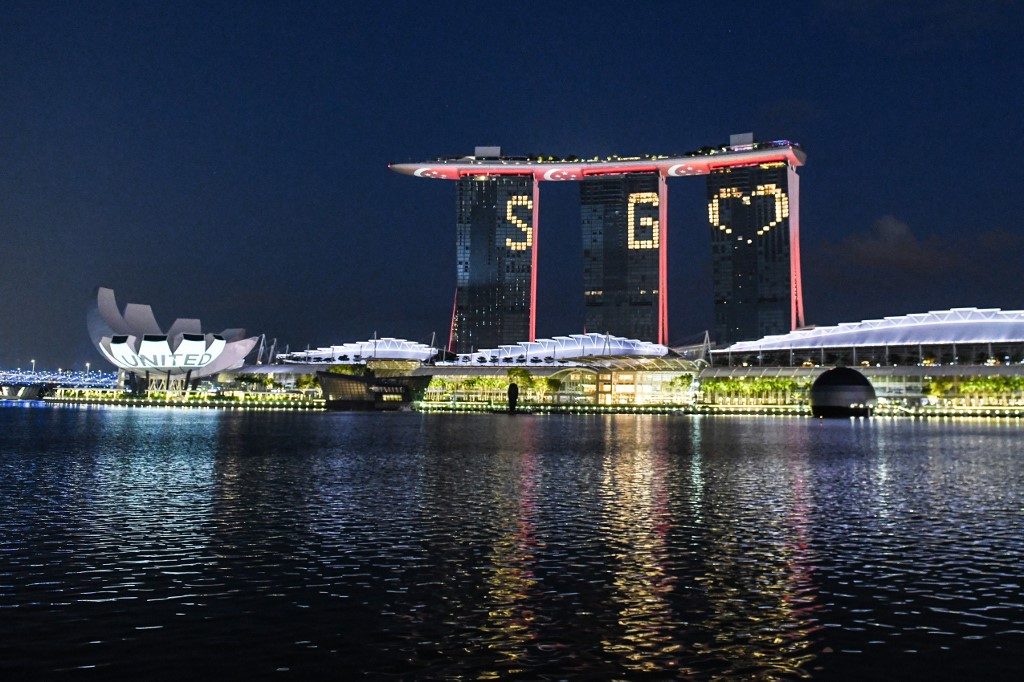SUMMARY
This is AI generated summarization, which may have errors. For context, always refer to the full article.

SINGAPORE – While the Philippines and Singapore are both easing their coronavirus lockdowns at the start of this month, the two countries are miles apart in stopping the spread of COVID-19 while their people are under quarantine.
Singapore on Monday, June 1, recorded zero “community” cases of COVID-19, referring to those outside foreign workers’ dormitories.
While the city-state recorded 408 new cases on Monday, all of these come from workers’ dorms that have been tightly fenced, isolated, and viewed as a separate outbreak that hardly poses a threat to the rest of the country. Up to 93.5% of Singapore’s coronavirus cases as of Sunday, May 31, come from workers’ dorms. (READ: Coronavirus in Singapore: ‘Wala silang puso para sa foreign worker’)
Singapore recorded 34,884 coronavirus cases (including those from workers’ dorms) as of Sunday, May 31. Of this number, 23 people have died here due to COVID-19.
The Philippines, on the other hand, recorded a total of 18,086 coronavirus cases as of Sunday. Of this number, the coronavirus has killed at least 957 people.
The country reported 862 new cases of COVID-19 on the same day, the day before it eased lockdown measures. Of this number, the Philippine Department of Health (DOH) said 16 were “fresh” cases of the coronavirus, while 846 were “late” cases coming from the government’s testing backlog.
On Monday, Philippine positive cases climbed further to 18,638, with the number of recoveries at 3,979, and deaths at 960.
Eased lockdowns
Experts from the University of the Philippines have warned it is premature for the Philippine government to ease its lockdown rules.
Defying such warnings, the Philippines on June 1 placed its capital region, Metro Manila, under a state of more relaxed restrictions called general community quarantine or GCQ. The same thing goes for other parts of the country, which have either been placed under GCQ or the much more loose MGCQ or modified GCQ. (READ: EXPLAINER: What happens under general community quarantine?)
June 1 is also an important day for Singapore – the last day of its lockdown called the Circuit Breaker or CB.
Starting Tuesday, June 2, Singapore is starting its exit from the CB, where the economy will be reopened in 3 phases. From permitting only some businesses to reopen to eventually allowing dine-in services, among other things, the Singaporean government is calibrating its measures until it reaches a “new normal.”
Singapore began its CB on April 7, and reached as high as 1,426 new cases (including workers’ dorms) on April 20, which fell within the lockdown period. In terms of “community” transmissions, Its record high during the CB period was 58 new cases on April 8.
The Philippines placed Metro Manila under quarantine on March 15 – or 3 weeks earlier than Singapore’s CB – and other parts of the country were quarantined soon after. The country’s record high was 1,046 new coronavirus cases on May 29, or 3 days before it eased lockdown rules. – Rappler.com
Add a comment
How does this make you feel?
There are no comments yet. Add your comment to start the conversation.